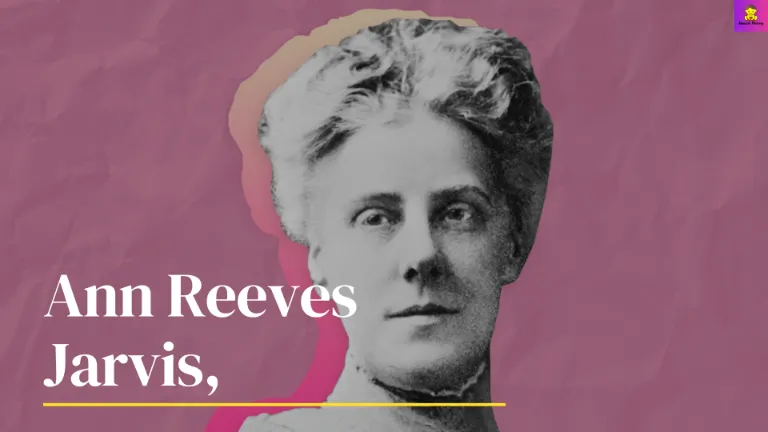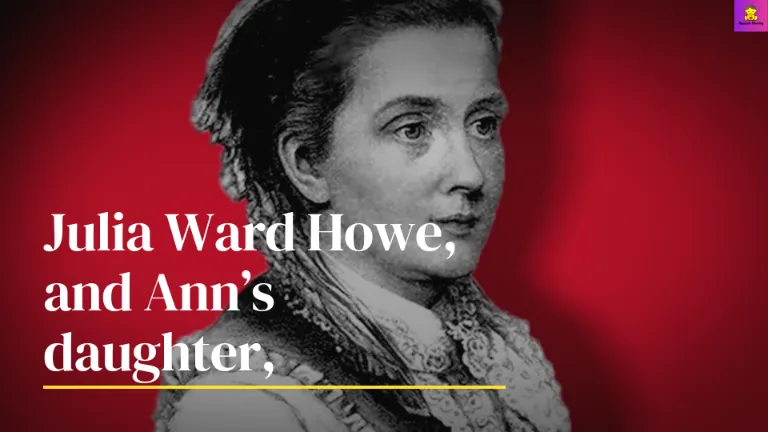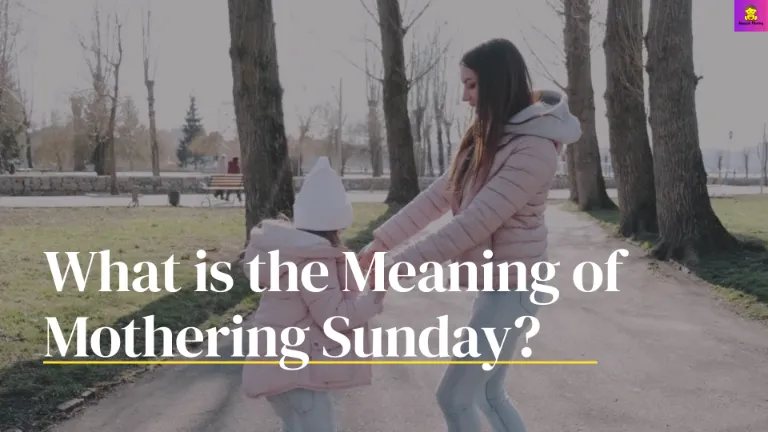Historically, mothers have always held essential roles in society. From Marie Curie, the first woman to ever win a Nobel Prize, to former Supreme Court Justice Ruth Bader Ginsburg, moms have changed the world.
For this reason, numerous individuals gather to celebrate all forms of motherhood on Mother’s Day, and we have a few extraordinary women to thank for that.
Ann Reeves Jarvis

In 1858, Ann Reeves Jarvis, an Appalachian homemaker, established Mothers’ Work Days during the Civil War in an effort to improve sanitation for soldiers and children. She also helped start a club to teach women how to take care of children.
You see, as a mother, she had lost eight out of her twelve children due to poor sanitation conditions.
When the Civil War broke out in the United States, she asked various members of the clubs she helped organize to pledge that the war wouldn’t interfere with their work. They vowed to provide medical care and assist those with illnesses regardless of which side they were fighting on.
She then started Mother’s Friendship Day as a day to promote the reconciliation between Union and Confederate soldiers.
Julia Ward Howe

Around this time, Julia Ward Howe, an abolitionist, writer, and suffragette, wrote a Mother’s Day Proclamation to ask mothers to join her in promoting world peace.
In 1873, she campaigned to establish a Mother’s Day of Peace in order to achieve world peace and resolve the conflicts between human beings. She was greatly inspired by the work of Ann Reeves Jarvis.
Anna Jarvis

It wasn’t until Ann Reeves Jarvis’ daughter, Anna, came along that Mother’s Day became the widely recognized holiday we know and love today. After the death of Anna’s mother in 1905,
she wanted to create a memorial day to honor mothers who had passed away and acknowledge the sacrifices mothers endure for their children.
The first official Mother’s Day celebration was held in Grafton, West Virginia at a local church on May 10, 1908.
Thanks to the financial backing of John Wanamaker, a Philadelphia business owner, this Mother’s Day was an enormous success. On this day, thousands of people also showed up to a simultaneous Mother’s Day event occurring at one of Wanamaker’s stores.
If you go to this church today, you can find the International Mother’s Day Shrine.
Seeing how successful this first Mother’s Day event was, Anna vowed to make it a national holiday. She tirelessly wrote to politicians and newspapers from around the country, asking them to adopt the day and celebrate motherhood.
Soon, the tradition caught on and spread to 45 other states, and several of them even declared it an official holiday in 1912 and after.
Finally, in 1914, former President Woodrow Wilson announced the first national celebration of Mother’s Day. Now, Mother’s Day is celebrated every second Sunday in May.
What is the Meaning of Mothering Sunday?

In the UK and certain parts of Europe, one of the clearest traditions of Mother’s Day stems from Mothering Sunday. Originally, it was a religious holiday that was observed on the fourth Sunday of Lent.
This day was meant for individuals to find their way back to their “mother church,” which was the church nearest to them, for a special service.
Churchgoers would also take this as an opportunity to reunite with family after being away due to work.
Historians have many theories on the Mothering Sunday origins, including that the tradition developed from children picking up flowers as they walked to church or that the holiday name refers to a reading found in the bible.

Mothering Sunday has now shifted into less of a religious holiday and is a day that everyone can celebrate. People in the UK take the time to honor mothers, such as birthmothers, grandmothers, stepmothers, and mothers-in-law.
Before the switch happened, people would celebrate with a Simnel cake, a fruit cake made with almond paste and 11 marzipan balls to represent the 11 disciples.
Since the tradition changed to a more secular one, children now often give their moms flowers, presents, and homemade cards.
People may also invite their mothers out to a nice brunch, lunch, or dinner. This year, Mothering Sunday falls on Sunday, March 14, 2021.
Where did the tradition of Mother’s Day come from?

Although Mother’s Day as we know it has more recent roots, early Mother’s Day celebrations can be traced back to festivals held by ancient Greeks and Romans.
In ancient Greece, people would honor Rhea, the wife of Cronus and mother of the gods. People from all over Greece would offer Rhea food, drinks, and flowers.
The Romans also celebrated a different mother of the gods named Cybele, or Magna Mater, which means Great Mother.
The Romans even went as far as to dedicate a temple to her, and in March they would participate in the Festival of Hilaria and provide gifts for the goddess.

Today, most people celebrate their moms by purchasing or making gifts and giving them a much-needed day off. Chocolates, flowers, and cards remain the most popular Mother’s Day gifts.
In fact, in 2020, the National Retail Federation (NRF) estimated that Americans spent approximately $2.67 billion on Mother’s Day.
“10 Fun Facts about Mother’s Day | Sykes Holiday Cottages Blog.” Sykes Holiday Cottages, 28 Mar. 2019, www.sykescottages.co.uk/blog/ten-fun-facts-for-mothering-sunday/.
“40 Original Ideas for Mother’s Day Activities | ProFlowers.” ProFlowers Blog, 25 Mar. 2020, www.proflowers.com/blog/mothers-day-activities?.
“History of Mother’s Day: Origin of Mother’s Day Celebration | ProFlowers.” ProFlowers Blog, 7 Apr. 2021, www.proflowers.com/blog/history-of-mothers-day.
“History of Mother’s Day Traditions around the World.” ProFlowers Blog, 14 Apr. 2016, www.proflowers.com/blog/mothers-day-traditions/?.
“How to Celebrate Mothers Day | Tips for Mothers Day Celebration.” Ferns N Petals, www.fnp.com/article/how-is-mothers-day-celebrated. Accessed 24 Apr. 2022.
“Mother’s Day Traditions around the World.” Scholastic.com, 2019, www.scholastic.com/parents/family-life/parent-child/mothers-day-traditions-around-world.html#:~:text=Today%2C%20the%20holiday%20remains%20grounded.
